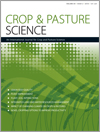CP17240A cytological and molecular analysis of D-genome chromosome retention following F2–F6 generations of hexaploid×tetraploid wheat crosses
This study reports on the differences in D chromosome retention observed in different bread wheat × durum wheat crosses. D chromosomes were still eliminated at the F5 generation suggesting that D chromosomes can be unstable for many generations in some of these crosses.




